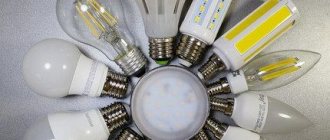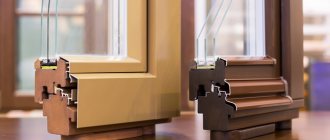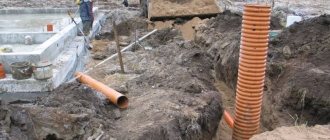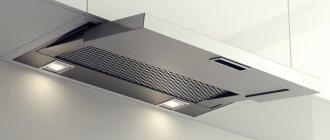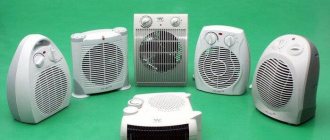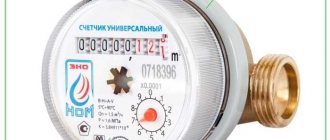The choice of socket and switch must be made taking into account the specific use of the room, the reputation of the manufacturer of the relevant equipment and the characteristics of the devices for connection.
The choice of such products can make even a professional electrician think twice: the range on display in a specialized store is wide and varied. And it is not easy for an ordinary consumer to navigate the criteria and safety requirements for the simplest type of electrical equipment, which has to be used daily and repeatedly.
What sockets and switches should be installed in the apartment?
Two common groups that do not leave much choice for a person living in a residential building:
- securely attached hidden (or internal) sockets;
- as safe as possible, with wires laid in special grooves (overhead or external).
The second group is used exclusively for unique decorative purposes or is recommended by fire safety regulations for installation in wooden premises. In an apartment, office or institution, internal sockets are used, in which only the rim and holes for the plug remain for visual inspection.
In reality, everything turns out to be not so simple: you can decide on the subject of preference only by knowing your own requirements: what room the structure is intended for, what safety measures are needed, and even what style match it is planned to achieve. Since these are functional devices, for continuous operation they will require reliability and additional gadgets.
Types of electrical outlets
In the understanding of the average person, a socket is just a device with holes into which you need to connect an electrical appliance. You can stop using an electrical appliance by simply unplugging the plug from the socket. Indeed, this is the main function of the product. But in today’s world, more modern devices are becoming more common, the functionality of which is much expanded.
The most popular types of sockets:
- With a lid - it will be indispensable where there is an increased risk of moisture or dust getting into the device. They are usually installed on the streets, in bathrooms or swimming pools. While the inlet holes are covered with a lid, the device is protected from external negative influences.
- With a curtain - the optimal model for a children's room in an apartment (for children's institutions). The design includes special enclosing parts that do not allow inserting a foreign thin object into the socket holes that could cause an electric shock to a person. The curtains will only open when the plug is inserted.
- With a switch - there is a special toggle switch-button on the case, which is responsible for supplying/cutting off the power supply to an electrical appliance connected to the network. In this case, there is no need to plug/remove the plug, which means extending the service life of the outlet device.
- With a fork ejector - this solution will make it easier to remove the plug and turn off the power supply, which will also extend the life of the device itself and the cable. A special toggle switch-button is installed in the body of the device; when pressed, the plug is literally pushed out of the contact grooves. This solution is aimed at speeding up the removal of the plug and will be required, for example, in public kitchens, hairdressers, etc.
- With a light indicator - a small light bulb is built into the design of the device and its glow indicates the presence of electricity in the network, which allows you to better navigate in the absence of lighting in the room.
- Floor-mounted and retractable - such devices are mounted in cases where (for some reason) it is not possible to place an outlet device on the wall. Most often they are integrated under countertops.
- With a timer - on such a device, using a digital timer, you can set the time for supplying/ending the supply of electricity to the electrical appliance. Can be equipped with digital/analogue display and control panel.
- With a Wi-Fi module - usually installed in smart home systems and such a device can be controlled remotely using a special application.
- Block (or cable) - installed in rooms where simultaneous operation of several electrical appliances is required.
- Special sockets - antennas, radio points (in old houses) or landline telephones are connected to them.
At the same time, there are completely original sockets, which include, for example, window samples that can convert ultraviolet rays into energy. Also, devices may have a built-in wattmeter that displays the amount of energy consumed by the connected electrical appliance and devices with USB connectors.
Correct Selection Options
Categories of sockets and switches for apartments are divided into simple and special. Expensive innovations that are controlled from the Internet, with a special type of grounding, or designed for low-power media, with a voltage indication and even a special mechanism that allows you to pull the plug without any effort. All this is not a cheap pleasure, but if they are produced by a manufacturer, it means there is a demand.
Most of these devices are designed for special cases, for example, with protection from children - for installation where there are small children, with protection from dust and moisture - in the bathroom, retractable - in the kitchen.
For bathroom
PUE standards previously prohibited the installation of sockets and even switches in the bathroom, in order to avoid electric shock. Even washing machines had longer cords to allow connections to be made outside the room with moisture. There are now sockets with spring-loaded lids that provide protection from drops and splashes even when the plug is plugged in. There are overhead waterproof ones - for those who thought about installation too late, but built-in ones are safer, although their installation requires more effort.
If the outlet is for connecting a washing machine, it must have a copper cable of the appropriate cross-section, and if you also plan to connect heaters, then the thickness of the outlet cable is increased by at least one and a half times.
Kitchen
The main requirement for sockets in the kitchen is their correct number and exact location for the appliances used. If you have to pull an extension cord, it is both unaesthetic and inconvenient. A free socket for a laptop or charging can be simple or protected from contamination. For a washing machine or electric stove, you will have to purchase a thick copper cable and allocate a separate line. With a button for free exit, the plug can be installed for a refrigerator or microwave, if its location is at the back of the device and requires effort to reach the desired place.
Experts recommend choosing sockets for the kitchen that are protected from dirt and dust, because potential interference is always present in a functional room.
Bedroom and hall
The main criterion for choosing a switch and the location of the plug in the bedroom and living room is maximum convenience. Most often, the most commonplace one is used here - a rocker switch, although complex options can also be used - for example:
- on a button timer;
- with automatic shutdown at a specified time;
- a block of several inputs for connecting night lights and necessary household electrical appliances;
- a key that allows you to immediately provide darkness and silence with one press.
Both in the bedroom and in the living room, the aesthetic component is important. Therefore, attention is paid to the color and decor of the electrical outlet. But in the living room it is better to give preference to the built-in type with a backlight indicator, and in the bedroom it is better to make it easier to press when you are asleep using the same indicator light, only with a soft, overhead-type rocker key. It is easy and simple to feel with your hand in the dark, and the characteristic click is much quieter.
Living room and corridor
There are no restrictions except the correct location and aesthetic component. For both types of electrical devices, the most convenient place is provided, and their number and height are calculated depending on the electrical devices used. A computer and TV, a home theater and an electric fireplace, shelving lighting, a table lamp or a floor lamp near the chairs are taken into account. All that is required from the owners of the premises is to ensure maximum aesthetics of the premises where strangers are most often allowed. The socket and switch must correspond to the style solution - be built-in, in a suitable color, and if it works out with texture - the option will be simply ideal.
Veranda and balcony
You can get by with the correct installation of overhead options so as not to bother with electrical wiring, but if the owners intend to do everything to the highest standard, it is better to take one with an indicator and dust protection. If children often play on the veranda or balcony, you need to take a model with special protection, and when the owners prefer to work not in the office or bedroom, but on the balcony and equip a workplace there, you should also think about an outlet for the Internet.
Types of wiring connected to electrical outlets
Electrical wiring is divided into the following types according to the installation method:
- Hidden - with this method the cable is mounted into the wall. It is the most preferred and safest option, however, it is not available in all cases.
- Open - the wire passes directly over the wall;
It is convenient to connect hidden wiring to internal switches and sockets, because in this case most of the electrical installation equipment is located inside the wall, and only a functional and aesthetically acceptable external casing is installed in plain sight.
When laying wiring in an open way, you will need external switches and electrical outlets. They will visually stand out on the surface of the wall, however, they can still be disguised as an interior. However, the location of the wiring and switches/sockets will have to be determined more carefully, because... these elements protruding from the wall can be accidentally touched and damaged by a person.
How to choose the best quality and most reliable sockets for the Internet
The correct choice of such an outlet is made based on the type of cable that the provider uses. Twisted pair is determined by the transmission speed and the best choice of a special device for connection would be products of categories 5 and 6, for example, RJ-45. If the supermarket does not have a consultant for this category, or is poorly informed about the type of product for Internet connection, it is better to consult with a person who is involved in this area.
Internal insulation
A high-quality socket, even with the front panel removed, ensures complete electrical safety.
All internal current-carrying parts are securely closed and insulated. There is no access to them.
In sockets of the budget series, there are always clearly open live parts.
And if you work with a screwdriver that does not have an insulated tip, then you may well either get energized or accidentally overlap the phase and the grounded body with the tip itself.
TOP popular brands: what to take
Recommendations from professionals involved in the installation of electrical wiring of equipment from Legrand, SchneiderElectric, Polo, ABB, Jung are excellent, and preference is given in the listed order. Legrand received the largest number of positive reviews: buyers note the original design, quality of materials, multifunctionality of the device and long, trouble-free operation.
Screw or screwless contacts
Modern and most old models also differ in the technology for connecting conductors. The newest sockets have screwless terminals that allow you to very quickly both connect and disconnect cables or wires.
There are still heated debates among electricians about which contacts are more reliable. Supposedly screwless, they reduce the area of contact with the wire.
This reduces current-carrying capacity and reliability. However, such a dispute is reminiscent of the age-old question, which is better: Wago or twist?
Here a lot depends on the quality of execution and operating conditions. There are sockets where a fairly powerful spring exerts pressure on just one point - for example, from manufacturers Gira, Legrand, Schneider.
But ABB has a spring with less elasticity, but it presses at two points simultaneously.
Use all products according to standards and recommendations and problems will never arise. For example, in some European countries, at the legislative level, the use of screw terminals has been prohibited since the 60s.
The main advantage of screwless terminals is that such connection does not require further maintenance. As the manufacturer assures, after installation, subject to rated loads, you will not look into such an outlet again for many decades.
All older sockets use screw technology. The stripped wire strands are clamped with traditional screws.
Moreover, the clamping force is also normalized. Professional installers use special torque screwdrivers for this.
Such contacts are much more labor intensive during installation and disassembly. In addition, it is advisable to periodically tighten these clamps, that is, maintain them. And this entails dismantling almost half of the structure of the entire outlet.
Wires pressed with a screw during temperature fluctuations - heating at maximum load and cooling when it is turned off - can shrink. And accordingly, the contact will weaken over time.
In high-quality sockets, the conductors in screwless contacts are in a constant state of tension, no matter how hot or cold.
In addition, they have a limiter template on the reverse side, which shows how accurately in millimeters the insulation needs to be removed from the core.
The best inexpensive sockets and switches
In the relatively inexpensive price segment, you can pay attention to the products of Chinese and Turkish manufacturers, about which there are many positive reviews: Makel, Viko, Bticino, Wessen, Lezard.
The use of a non-standard option is justified in specialized premises, but the simplest ones are suitable for a room and bedroom. Sometimes people deliberately buy the most expensive thing in order to guarantee themselves a high-quality item with long-term use.
Caliper
The new sockets are made of two layers:
- base – galvanized steel
- cover - polycarbonate
What benefits does this provide? Polycarbonate provides additional electrical safety.
Even if somehow a phase from the wiring breaks through to the socket body, the front part of the caliper will be reliably insulated. And touching it with your fingers will not give you an electric shock.
But often, many electricians unscrew and disassemble sockets to find a fault, without even removing the voltage from it. This function will greatly protect you from accidental electric shocks.
And the presence of two layers allows you to increase the strength of the entire structure by about 50% compared to a traditional galvanized steel caliper.
Overview of operating rules
Such structures must be operated taking into account safety precautions. Regardless of how much the design costs, who made it and what its characteristics are, there is a single list of rules that must be strictly followed:
- Do not connect devices with a higher load.
- Do not install near heating devices.
- The plug should ideally fit the holes in the socket and fit into them tightly.
- If there is significant humidity in the room, you need to choose models with an increased level of protection.
- It is strictly forbidden to operate products with visible damage. They can cause smoke, fire and sparks.
- Do not allow the socket to be immersed in water or splashed on it.
- It is advisable to maintain the operating temperature range from -25 to +50 degrees.
- Do not use abrasive products for cleaning. Just a dry cloth.
- If damage is detected, you should immediately turn off the power to the room.
Video instructions for installing sockets:
Forbidden places
Any place where sockets are located must be accessible so that in the event of an emergency it is possible to immediately disconnect devices from the network. You should not install sockets behind built-in appliances or inside the lower tier.
It is unacceptable to place them behind cabinets with drawers or with closers.
Installing electrical sockets above the stove or hob is also unacceptable - due to warm air, the cable insulation may simply crumble. There must be a safe distance from appliances to sockets. Also, they cannot be installed above or below the sink.
By following our recommendations and safety precautions, you will carry out quality repairs and avoid many mistakes.
Recommendations for the bathroom
The bathroom is a place with almost permanently high humidity. Therefore, for maximum safety, it is necessary to install the electrical outlet together with a splash-proof cover. The minimum height for the socket is 15 cm to prevent water from getting inside. All safety precautions and common sense must be followed during installation.
For ease of use of various devices, you can use the following socket height parameters:
- For hair dryers, razors and other small electrical appliances, it is recommended to install the socket at a height of 1.1 m;
- Washing machine – 1 m;
- Water heater – 1.8 m.
Hallway
You don’t need many sockets in the entrance area: 1-2 pieces at a height of about 30 cm from the floor are enough.
Typically, the hallway space is used only to connect a vacuum cleaner or shoe dryer. They should be placed in places where furniture is not planned. Sockets should be located away from exhaust ducts and gas pipes. It is recommended to retreat at least 10 cm from doorways.
If you plan to keep an Internet router or other electrical appliances in the hallway, provide another outlet for each.
Construction device
In every apartment and country house, inconspicuous devices are installed that ensure the operation of a TV, electric kettle, washing machine, refrigerator and many other electrical appliances that are so necessary for people’s comfortable living. To avoid mistakes when choosing, you need to understand the characteristics of the products.
The main elements of the product are:
- frame;
- built-in fittings;
- cable for connecting the fittings to the power source.
The potential difference between the internal contacts contributes to the creation of voltage, which is the power source for absolutely all electrical appliances. Voltage is transmitted through special holes.
The structure of the fittings is as follows:
- The base is made of ceramic or plastic. Contacts are secured using metal plates.
- An additional function of the plates is as a place for screw fastening of cables.
- Popular models with a grounding function are available. They are equipped with an additional contact or plate.
- The structure is installed in a glass or attached to the back cover with rails. Depends on the type of installation.
An upper decorative overlay is required. It is screwed to the base using screws. Models with snap-on clip are available. Only in this form can the product be used safely.
Optimal wiring directions
The presence of separate directions will help to simplify the process of monitoring the operation of the electrical network. With such a separation, there is always the possibility of turning off one and allowing the others to work.
In practice, the most common is considered to be four directions:
- Basic equipment;
- Sanitary unit;
- Kitchen space;
- Lighting systems.
If the system is old, then, for example, a separate cable is laid for washing equipment.
The listed directions have their own characteristics, which should be taken into account when wiring. Work in the kitchen and bathroom is carried out according to certain rules. It is best to study in more detail the arrangement for all lines separately, then the wiring will be done correctly.
